A Memorial to the Life of Robert James Laycock - “Where in the Hell did the time go?”
July 30, 1920 - July 1, 2010
A Memorial to the Life of Robert James Laycock - “Where in the Hell did the time go?”
July 30, 1920 - July 1, 2010
Robert ‘Bob’ James Laycock was born on July 30, 1920 in Cheyenne, WY, to James Granville ‘Granny’ and Martha Marguerite (Freudenthal) Laycock. He was their fourth child and third son. As an infant he was dubbed “Bobby Jim,” a name that followed him throughout his life with many of his extended family members and life-long friends.
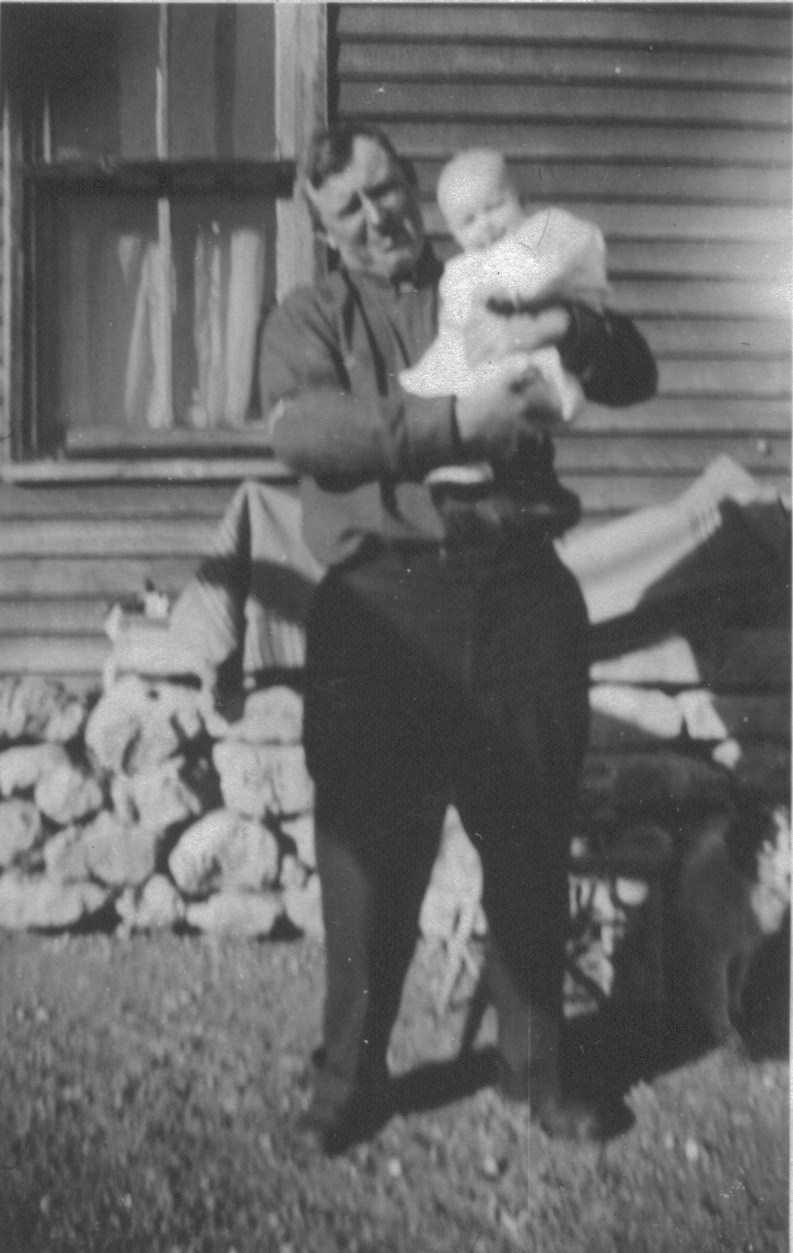 His early years were spent in Cheyenne, Pine Bluffs, and ranches on Horse Creek, and other areas in Laramie County. In Cheyenne, his family lived on Randall Avenue, one block east of Fort Russell (now F. E. Warren) and Bobby Jim often tried to toddle out to the street to watch the many soldiers, and the comings and goings of the busy Fort. However, his mother had a well trained baby sitter in a huge English bulldog, also named Bob, who would grab Bobby Jim by the seat of his pants, carry him back up to the porch and sit on top of him to keep him safe and out of trouble. Later as a small child, Bobby Jim would take to the theatrical stage; that is the stage of the old movie theater in Cheyenne. He would climb to the stage with its columns, wrap himself around one and sing the nursery rhyme Bobby Shafto at the top of his lungs, in competition with the organist for the silent movies.
His early years were spent in Cheyenne, Pine Bluffs, and ranches on Horse Creek, and other areas in Laramie County. In Cheyenne, his family lived on Randall Avenue, one block east of Fort Russell (now F. E. Warren) and Bobby Jim often tried to toddle out to the street to watch the many soldiers, and the comings and goings of the busy Fort. However, his mother had a well trained baby sitter in a huge English bulldog, also named Bob, who would grab Bobby Jim by the seat of his pants, carry him back up to the porch and sit on top of him to keep him safe and out of trouble. Later as a small child, Bobby Jim would take to the theatrical stage; that is the stage of the old movie theater in Cheyenne. He would climb to the stage with its columns, wrap himself around one and sing the nursery rhyme Bobby Shafto at the top of his lungs, in competition with the organist for the silent movies.
His father helped run the sheep and cattle operations of the Wilkinson family, which ran from northern Colorado, through Wyoming and up into Montana. The Wilkinson’s were extended family. Their ranches on Horse Creek and in other areas of Laramie County, Wyoming were where Bob learned to rope, ride, brand cattle, shear sheep and break horses, a true cowboy in every sense of the word. There are family pictures of him working several hundred sheep as a young boy; riding his horse, Honey, when an adolescent; and roping and bull-dogging steers as a young man. He could be found during many a Frontier Days rodeo working around the chutes, helping other cowboys or riding pick-up. Occasionally Bob entered calf roping competitions at other area rodeos.
Bob attended school in Pine Bluffs and he was smart enough to pretend being dumb to get his sisters to do his homework or pay him money to do it himself. However, Bob wanted to learn from life more than sit in a classroom and he dropped out of school after the eighth grade. Dropping out didn’t stop his thirst for knowledge, as he enjoyed reading about a variety of subjects. He was well versed in history, geology, engineering, electronics, mechanics, meteorology, archeology, animal husbandry and wildlife just to name a few; and he was a mathematical whiz. He could do more with numbers than most college graduates; but he couldn’t spell K-A-T!! He was an avid reader of National Geographic magazine and traveled the world through its covers. He shared this love with his grandchildren reading to them from its pages, sometimes before they were old enough to even sit up by themselves. In later years when he was encouraged to take a GED test in order to be hired for a government position, Bob declined and said he was too old for such foolishness and his knowledge was earned without a piece of paper. And even without Bob having a high school diploma or college degree, those who offered the position still called on him in later years, seeking his advice or how to solve a problem they were encountering. He always shared freely of his time and knowledge.
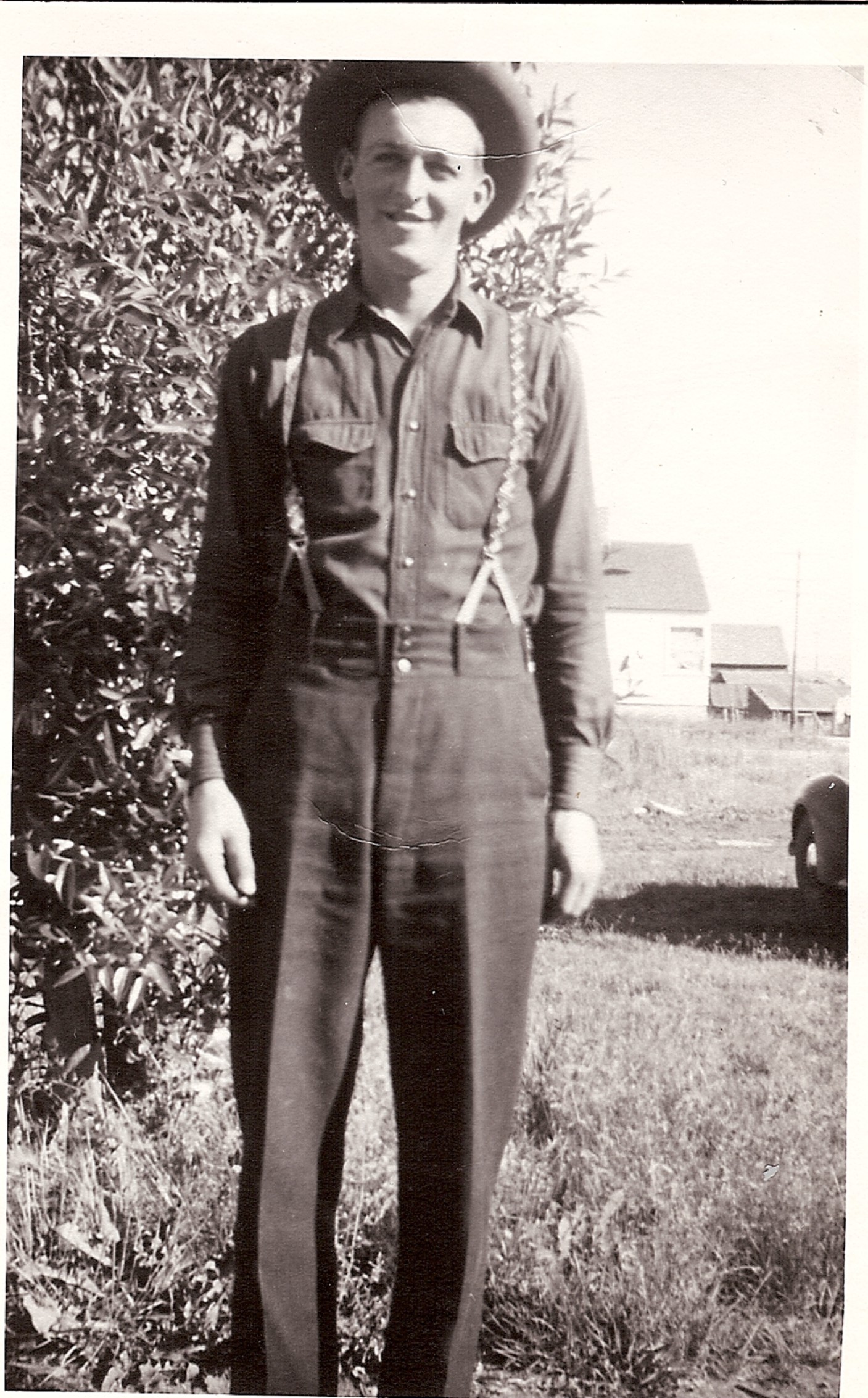 After his school years, Bob worked at home on the ranch. After a short period of time he was hired to run a wheat farm around the Burns area. He also drove trucks from Cheyenne to Omaha and back while still in his teens. It is curious how such a young man was respected so much to have so much responsibility. At other periods in his lifetime Bob also ran other wheat farms in southeastern Wyoming. He also worked in potato cellars, around Pine Bluffs, hauling and moving the 100 pound bags, which in later years he claimed ruined his knees.
After his school years, Bob worked at home on the ranch. After a short period of time he was hired to run a wheat farm around the Burns area. He also drove trucks from Cheyenne to Omaha and back while still in his teens. It is curious how such a young man was respected so much to have so much responsibility. At other periods in his lifetime Bob also ran other wheat farms in southeastern Wyoming. He also worked in potato cellars, around Pine Bluffs, hauling and moving the 100 pound bags, which in later years he claimed ruined his knees.
In 1937 AT&T began the huge undertaking of linking the East Coast and the West Coast with large underground telephone cables to provide telephone service for the entire nation. They chose four routes across the United States and one route went through Wyoming and Utah, very much along the same path as old US Highway 30. Bob worked with the crews that laid the cable across these two states. Now, one would think the cable would have been laid continuously from Cheyenne to Evanston to Salt Lake City to Wendover. However, due to the terrain, seasons and climate, Bob worked from Cheyenne west to Laramie; then from Rawlins west to Rock Springs; then from around Echo, UT to Salt Lake City; then back to Laramie to Rawlins; then Rock Springs to Echo, UT and lastly Salt Lake City to Wendover. No wonder it took until 1943 to complete the trans-America cables!!!
At the beginnings of World War II, Bob went to enlist like most of his friends and family. Unfortunately, he was classified 4-F due to what was then termed a “bad heart” but was in later years discovered to have just been a non-threatening abnormal heart beat. So Bob didn’t go to war, but he helped fight it just the same. He went to work for Boeing/Untied Airlines in Cheyenne, which were building airplanes for the war effort. Bob was supervisor for one of the first women crews in the country. He and his “Rosie the Riveters” worked diligently to build B-17 bombers. When the demand came for more firepower for protection of the flying fortresses, Bob worked with the engineers to design and modify the planes to fit the belly gun turret. He often worked under armed guard to ensure his and that of our country’s safety. Bob talked with military specialists and generals almost daily during the conversions of the planes. 
With the tide of war turned and then coming to an end, Bob’s job with Boeing/United Airlines ended as well. He decided to follow extended family to California. His mother’s brother and brother-in-law had construction type businesses there and could always use the help. Bob changed his occupation to that of a roofer and house painter. While one of the businesses was headquartered out of Angels Camp, CA, many of the contracted jobs took place in the heat of southern California, around the Los Angeles region. Many young starlets were smitten by Bob having been a “real” cowboy, from the “real” West, not to mention his dashing good looks. After several months of missing the high mountains, prairies and his real home, Bob headed back to the state of Wyoming.
Once back in Wyoming, Bob began working for the Holly Sugar Company in Torrington, WY. He worked the pulp pits and scooped up the foul smelling mash of the processed sugar beet remains to be fed to cattle in the nearby feed lots. He also operated the dragline machines and loaded the sugar beets into rail cars from various rural beet dump sites or into haulers if there was no rail access.
During his time at Holly Sugar Company, Bob became very skilled at operating a dragline and when layoffs at Holly forced him to find new employment to support himself and his family; he sought a laborer position with Etiln E. Peterson Construction, who was building a new bridge over the North Platte River, right next to the sugar factory. His new employer was overjoyed to discover Bob had many other skills besides just being an honest, hard working man. Experienced and proficient dragline operators were in short supply and “Old Man Pete” Peterson was delighted to have another operator on board the project. Bob was able to hone his dragline skills and began operating of other heavy equipment, too. Although a serious health issue, which would cause severe complications later on, began on this job site; that of working in excessive amounts of fine, powdery cement dust. When this bridge was completed in Torrington, “Old Man Pete” sent Bob off to the Big Horn Mountains, outside of Sheridan, WY, to build another bridge. 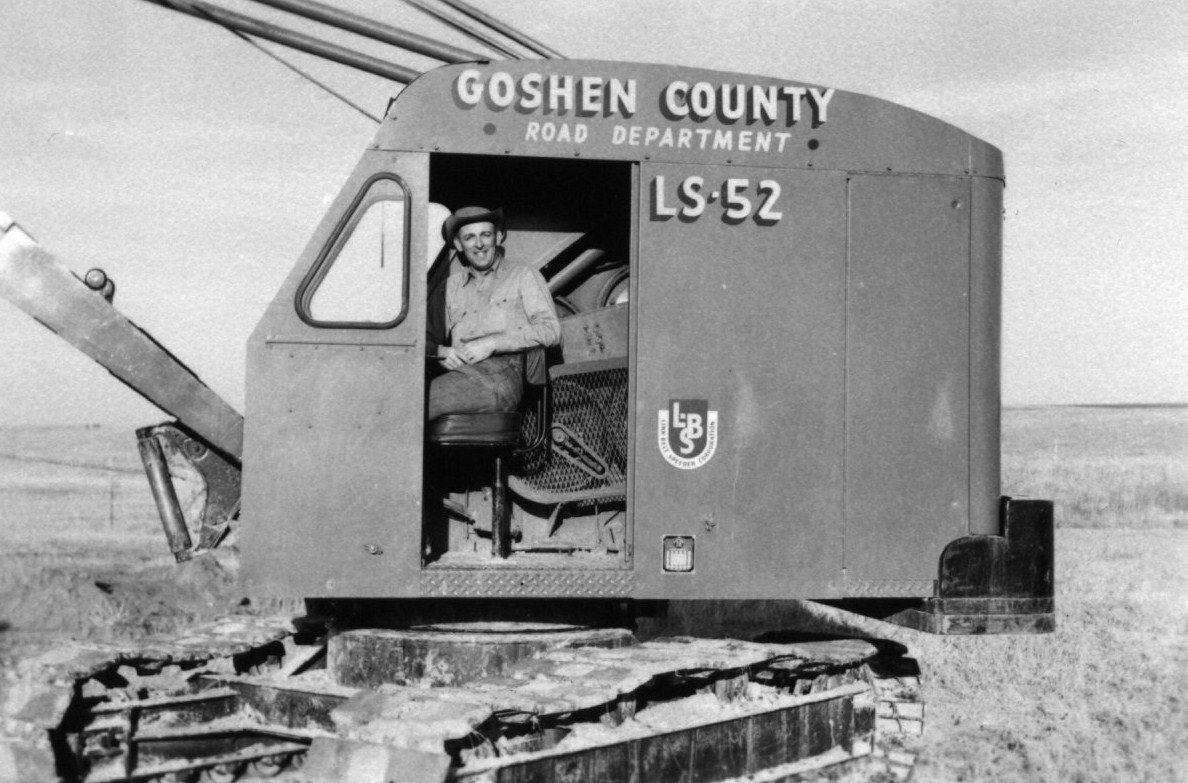
After bridges and projects at Sheridan, Gillette, Whalen Dam, Casper, Guernsey, Edgerton, Orpha, Douglas and some other places in Wyoming, Bob became very ill and returned to his in-laws in LaGrange. While working in Sheridan Bob had been diagnosed, with help from a national tuberculosis center, with blocked bronchial tubes from all the cement dust. Bob kept working through all the other jobs, but his lungs were weakened and very susceptible to the pneumonia that caused him to quit work all together.
Bob began working for Goshen County Wyoming Road and Bridge Department around 1952. He encouraged the county to purchase a new Link-Belt dragline, which he used on many projects for the county. Bob also drove the big orange snowplow to open the many county dirt roads in the harsh winters. Many times he rescued students and their school teachers from being stuck in the rural school houses, far away from their homes, during a blizzard. All this would come to an end when Bob began having skin rashes and irritations. Nothing seemed to help as all of his skin disappeared from his body. The doctors sent him to hospitals in Denver, CO, not knowing if he would survive. The diagnosis for this illness became a life-long threat: allergy to any combination of sunlight, heat and dirt.
After recovering enough to return to work, Bob got jobs here and there as a heavy equipment and dragline operator. In late 1955, he returned to work with Peterson Construction and continued to work for them for 32 years. He was a job foreman, job superintendent, crane operator and heavy equipment operator. He built bridges, overpasses, viaducts, boxes, culverts, dams, spillways, cattle guard crossings, pre-cast concrete buildings, campgrounds 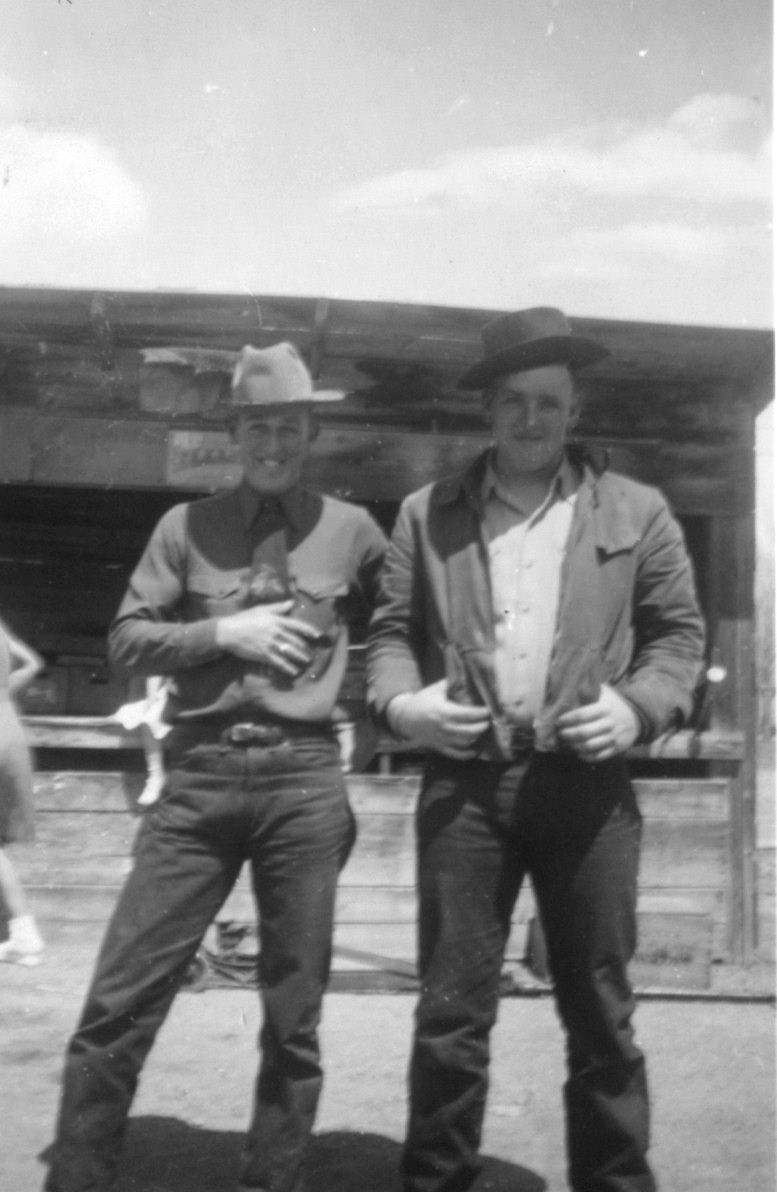 including picnic tables, drainage systems and operated concrete batch plants, all over the state of Wyoming; most of which are currently in use. He dug trenches for underground cables, set electric light poles at rest areas and campgrounds and even built one of the largest and fanciest horse barns in Natrona County. He was the project manager for the building of the longest bridge span in the state over the Powder River on I-90, between Gillette and Buffalo. This project made history and was extremely dangerous due to the heat and quicksand. Over the years he worked from early in the mornings to the middle of the night, even weekends and often during storms when his hourly crew couldn’t.
including picnic tables, drainage systems and operated concrete batch plants, all over the state of Wyoming; most of which are currently in use. He dug trenches for underground cables, set electric light poles at rest areas and campgrounds and even built one of the largest and fanciest horse barns in Natrona County. He was the project manager for the building of the longest bridge span in the state over the Powder River on I-90, between Gillette and Buffalo. This project made history and was extremely dangerous due to the heat and quicksand. Over the years he worked from early in the mornings to the middle of the night, even weekends and often during storms when his hourly crew couldn’t.
Bob enjoyed the outdoors on his personal time too. He loved to hunt both fowl and big game. He was an excellent marksman, maintaining, “If you can’t take down an animal with one shot you’re only wasting the meat, so why bother.” He liked to fish and could cook up the best pan-fried Brook Trout anywhere. Sometimes though, it would have been better for Bob to have stayed indoors, as he had been struck by lightning three times!
While Bob had abundant talents and skills, his greatest capacity was as father, grandfather, and great grandfather. And these roles extended far beyond his own bloodline to mentoring many children, young people and adults who are now all over the world. After retiring he continued working and helping people; doing yard work, distributing commodities, plowing fields, harvesting, branding and just doing anything he could to help anyone. If extended family includes those he cared about, Bob’s family is as large as the state of Wyoming.
He married Betty Skoles in 1941, had one son and was later divorced. 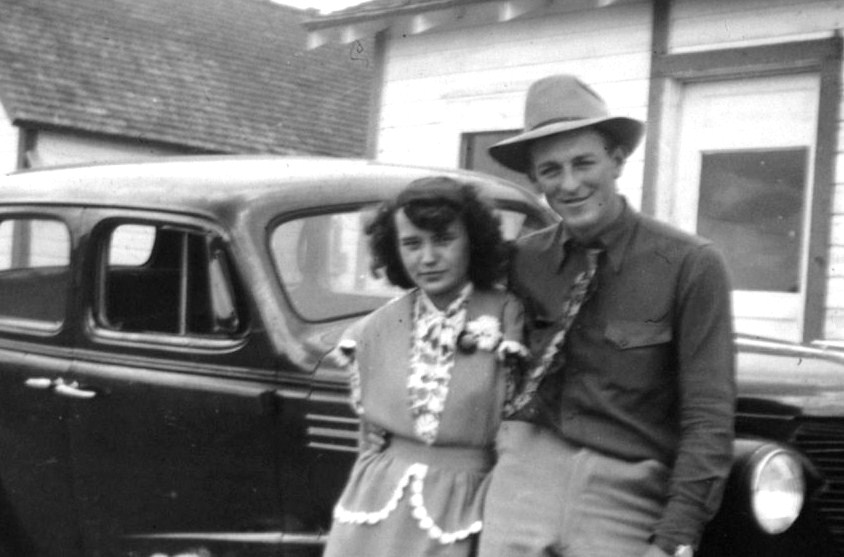
In 1948, in the courthouse in Gering, Nebraska, he married Donna Jean Ward, daughter of Joe and Helen (Miskimins) Ward, of LaGrange, WY. Over 62 years of marriage, they lived all over the state of Wyoming, finally retiring to their longtime hometown of LaGrange in 1987. They had good friends and acquaintances from every corner of Wyoming and from every walk of life.
Together Bob and Donna raised more kids than just their one daughter. They often purchased food, clothing and medical care for Bob’s entire crew. They brought their grandkids to Wyoming from Seattle every summer to stay with them, so their mother wouldn’t have to pay for childcare while she worked. Bob singlehandedly prepared one of his lots and moved his daughter’s large mobile home to it, when her rent rose beyond her budget. Bob’s and Donna’s bank account never grew as large as it should have, because their needs never came first if someone else was in need.
In February 2010, Bob was diagnosed with terminal myleodisplastic anemia. He was placed in the care of his wife and daughter with in-home hospice. During this time Bob slept a great deal while his body, and eventually his mind deteriorated. He would awake to realize the clock had progressed and he would utter one of his favorite sayings, “Where in the Hell has the time gone?” He died early Thursday, July 1st, 2010.
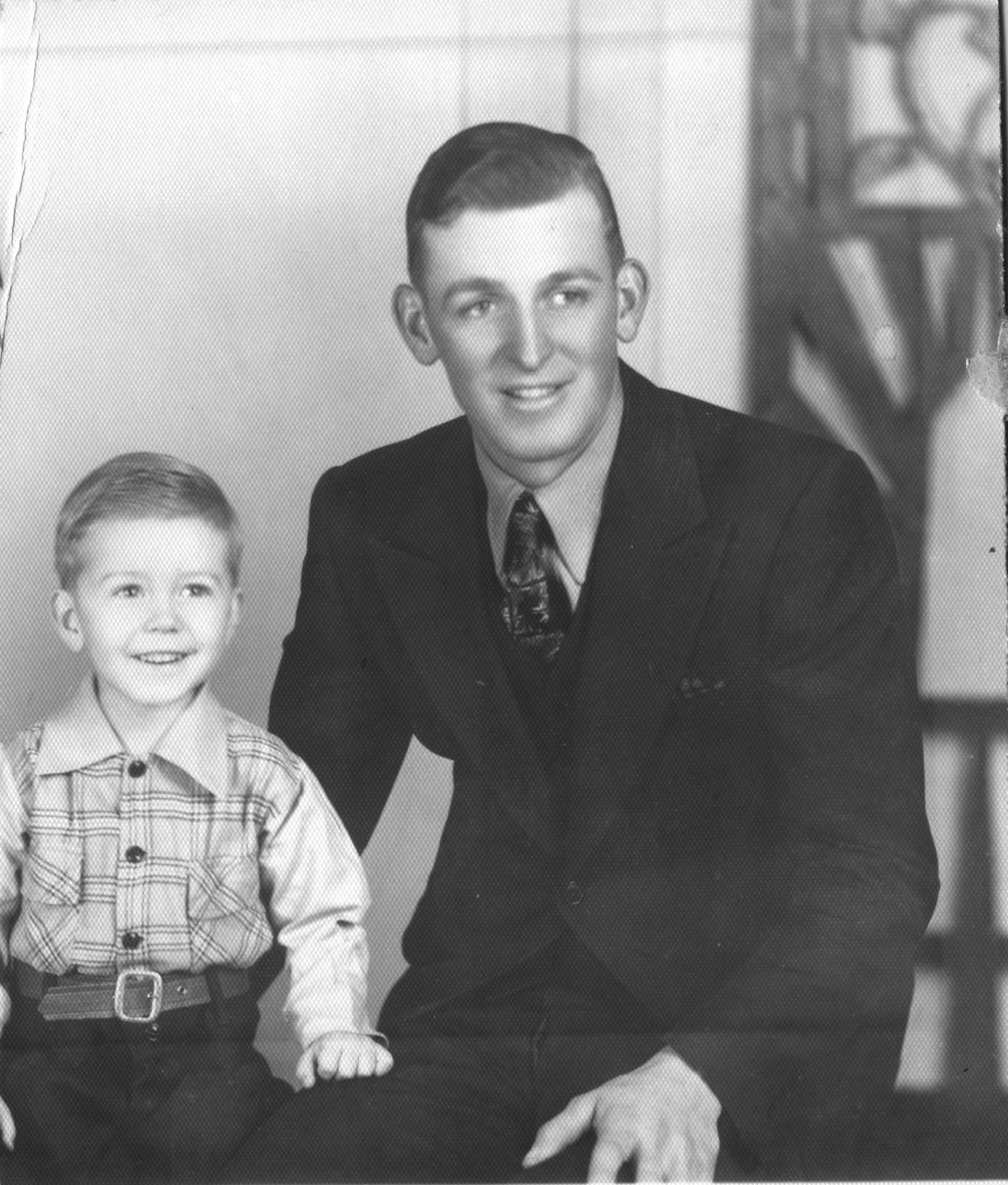 Bob was preceded in death by his parents; his father–in-law and mother-in-law; three brothers, John, Glen and Tom; sister, Mary Alice Judy; sister and brother-in-law, Elizabeth and Woody Bradley; brother-in-law Francie Spier and granddaughter, Diana Laycock. He is survived by his wife, Donna; daughter and son-in-law, Susan Jo and Jim Hunter; daughter, Adriana Laycock; son, (estranged) Jimmie Laycock; grandsons, Rick Laycock, Dr. Charles Laycock (Dana), Robert James Laing (Teresa), Dale Hunter (Cindy), Josh Hunter (Lindsey) and Ben Hunter; granddaughters, Patty Seaver (Mark), B-Jo Laing-Dumler (James) and Kendra Slater (Eric); 16 great grandchildren, with one more on the way. Additionally, he is survived by sister, Irene Spier; sister–in-law and brother-in-law, Marian and Bill McFarland; sister-in-law, Carolyn Laycock; brother-in-law and sister-in-law, Chuck and Wilma Ward; numerous nieces, nephews, cousins and friends all over the country. Bob never met a stranger and always found something in common with everyone he met.
Bob was preceded in death by his parents; his father–in-law and mother-in-law; three brothers, John, Glen and Tom; sister, Mary Alice Judy; sister and brother-in-law, Elizabeth and Woody Bradley; brother-in-law Francie Spier and granddaughter, Diana Laycock. He is survived by his wife, Donna; daughter and son-in-law, Susan Jo and Jim Hunter; daughter, Adriana Laycock; son, (estranged) Jimmie Laycock; grandsons, Rick Laycock, Dr. Charles Laycock (Dana), Robert James Laing (Teresa), Dale Hunter (Cindy), Josh Hunter (Lindsey) and Ben Hunter; granddaughters, Patty Seaver (Mark), B-Jo Laing-Dumler (James) and Kendra Slater (Eric); 16 great grandchildren, with one more on the way. Additionally, he is survived by sister, Irene Spier; sister–in-law and brother-in-law, Marian and Bill McFarland; sister-in-law, Carolyn Laycock; brother-in-law and sister-in-law, Chuck and Wilma Ward; numerous nieces, nephews, cousins and friends all over the country. Bob never met a stranger and always found something in common with everyone he met.
Cremation has taken place and there will be a private memorial service at a later date, when the family gathers to scatter his ashes. Condolences may be sent to P.O. Box 141, LaGrange, WY 82221 or email to sue@4udesigns.com . Remembrances in Bob’s behalf may be made to the LaGrange Volunteer Ambulance Service, P.O. Box 185, LaGrange, WY 82221.